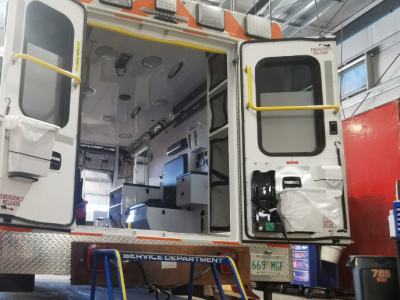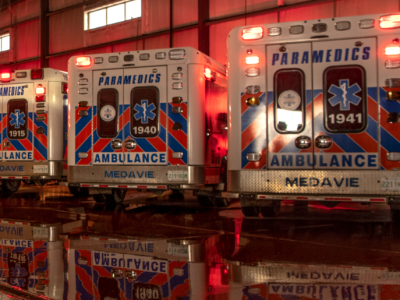The HVAC (Heating, Ventilation, and Air Conditioning) system in an ambulance is not just a comfort feature but a critical component that ensures optimal patient care. Consisting of diverse components like air filters, fans, ducts, and temperature control mechanisms, the HVAC system maintains the indoor environment, protecting against potential health risks. Regular checks are crucial to maintain its functionality, encompassing inspections of air quality, filter cleanliness, and overall system efficiency.
Having access to a maintenance team with comprehensive industry knowledge about HVAC systems, including troubleshooting techniques, component replacement procedures, and the significance of adherence to recommended maintenance schedules is critical in ensuring your vehicle has a reliable system that can maintain its environment at an optimal comfort level in every scenario.

HVAC Maintenance Checklist
- Inspect and clean or replace as needed any return air, discharge, and other air handling filters
- Have system heat output checked at least once per year, usually in the Fall months
- Have system cold air output checked at least once per year, usually early in the Spring
- Have air flow performance checked for all HVAC and environmental control systems such as auxiliary filtration units and air evacuation systems
- Have HVAC system controls, wiring, lines, hoses, belts, and components visually inspected twice per year to ensure they are in good condition and free of damage or excess wear
- Perform other preventive maintenance as recommended by the system’s manufacturer
Benefits of Scheduling HVAC Maintenance
1. Patient Comfort and Stability
Ambulances are often deployed in extreme weather conditions, be it scorching heat or freezing cold. A well-functioning HVAC system ensures that patients are kept in a stable and comfortable environment throughout their journey. Maintaining optimal temperatures is crucial for stabilizing patients, preventing complications, and improving their overall well-being during transit.
2. Infection Control and Air Quality
The continuous influx of patients with diverse medical conditions exposes ambulance environments to a higher risk of infectious disease transmission. A properly maintained HVAC system helps in controlling airborne contaminants, pathogens, and allergens, thereby reducing the risk of cross-contamination between patients and medical personnel. Regular maintenance ensures that air filters are clean and function efficiently, promoting a healthier environment inside the patient unit.


3. Equipment Performance
Many medical devices and much of the equipment used in ambulances are sensitive to temperature fluctuations and humidity levels. An HVAC system that is not adequately maintained can lead to equipment malfunction or damage, compromising the quality of care provided to patients. Proper HVAC maintenance helps preserve the integrity and functionality of essential medical equipment, ensuring optimal performance during emergencies.
4. Driver and Crew Comfort
Ambulance crews often work long shifts under stressful conditions. A well-regulated HVAC system not only ensures the comfort of patients but also contributes to the well-being of the crew. Maintaining a comfortable temperature and adequate ventilation inside the vehicle helps reduce fatigue, enhancing concentration, and promoting overall safety for both the crew and the patients under their care.


5. Operational Efficiency and Reliability
Unforeseen HVAC system failures can disrupt ambulance operations, leading to delays in patient care and transportation. Regular maintenance checks and servicing help in identifying and addressing potential issues before they escalate into critical failures. By ensuring the reliability and efficiency of the HVAC system, ambulance services can minimize downtime, optimize resource utilization, and improve their overall responsiveness to emergency calls.
6. Cost Savings and Longevity
Neglecting HVAC maintenance may seem like a cost-saving measure in the short term, but it can lead to higher expenses in the long run. Untimely repairs, replacements, and reduced fuel efficiency due to malfunctioning HVAC systems can significantly impact operational costs for ambulance services. Investing in regular maintenance extends the lifespan of HVAC components and helps avoid expensive repairs and emergency breakdowns.
The HVAC system in ambulances is much more than just a convenience—it is a critical component that directly impacts patient outcomes, crew well-being, and operational efficiency in emergency medical services. Prioritizing regular maintenance and servicing of HVAC systems is essential for ensuring a safe, comfortable, and efficient environment inside your ambulance, ultimately contributing to the delivery of high-quality emergency medical care when it is needed most.







